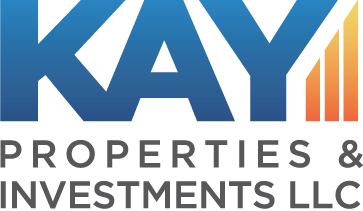By Chay Lapin, President, Kay Properties and Investments
Key Takeaways:
- Why should real estate brokers present a DST 1031 Expert to their clients?
- Why is a DST 1031 perfect for a multifamily investor who is ready to sell their asset?
- What is “mortgage boot” and why should it be avoided?
- What do DST 1031 experts bring to the table for both the seller and real estate broker?
Today’s multifamily market is bustling with activity as the number of owners and investors from Maine to California are executing thousands of sell/buy transactions every single day. According to a recent multifamily market report by CBRE Real Estate Group, this deal velocity can be attributed in part to favorable economic conditions and reduced negative impacts from COVID-19. So far in 2021,the multifamily market saw $148 billion in transactional activity, a 33 percent total increase over the previous year. Owners of appreciated rental properties may have equity potentially “locked up” in their investment real estate. Selling in this bustling market can potentially unlock this trapped equity. Finding replacement properties to 1031 exchange into that provide passive income and potential for diversification* is a challenge many sellers face. Delaware Statutory Trust may be a potential solution to this challenge. That’s why more and more brokers are turning to DST specialists to help advise their clients on how to avoid being hit with a large capital gains tax following the sale of their multifamily investment property.
In a nutshell, DST 1031 exchanges allow multifamily sellers to defer the income from the sale of their property by investing in a co-ownership real estate portfolio as outlined in the Internal Revenue Service Revenue Ruling 2004-86. The DST 1031 structure allows a trust to be set up that consists of multiple investors who share passive ownership of a designated building or entire portfolio of investment properties. This strategy allows investors to create customized and diversified* portfolios, alleviate the daily landlord duties, reduce the financial burden by spreading costs across multiple investors, provide investors the potential for monthly income potential, and offers significant tax advantages. DST properties are typically institutional-grade real estate assets like net lease buildings, self-storage facilities, logistics and transportation centers, and multi-family apartments, offering investors the opportunity to own assets that would normally be financially out of reach for them.
Brokers Need a Delaware Statutory Trust 1031 Specialist to Help Them Advise Their Clients
1031 exchanges are often the “preferred solution” for investors who have sold their investment property. Because no matter who the investor is or what type of investment asset that has been sold, they will always face the same challenge at the end of sale of an appreciated property: a big tax bill. This tax event is called “capital gains” and is calculated by taking the difference between a property’s cost basis and the sale price, typically at a rate of somewhere between 15 percent and 28 percent for federal capital gains taxes. Add to that depreciation recapture rate of 25 percent, state capital gains tax, and Medicare surcharge and the tax consequences could be devastating. In fact, many investment property owners decide not to sell because of the significant tax implications.
A DST 1031 Over a Straight 1031 Exchange?
At this point, the real estate broker will most likely recommend the seller enter a “1031 exchange”. This strategy is named after section 1031 of the Internal Revenue Code and allows a property owner to defer capital gains taxes on a profitable sale by reinvesting the proceeds into another property of “like kind,” and there is no limit to how many times it can be done. In theory, there could be a successive series of exchanges that defer capital gains taxes indefinitely, which allows an investor’s income to potentially grow tax-free over a long period of time.
However, the rules of a 1031 exchange can be complicated and incredibly difficult (and potentially expensive) to accomplish without the advice of a true 1031 expert. Generally speaking, all 1031 exchanges follow these parameters:
- The replacement property must be “of the same nature or character” (i.e. “held for investment purposes”) as the relinquished one.
- The new property must be “identified” within 45 days of the close of the sale, and the purchase transaction must be completed within 180 days of the sale.
- The amount of money invested into the new property must be the same as the sale proceeds from the old property. If there is a difference, it is known as “boot,” and it becomes taxable.
- Exchangers must hold title to replacement property in the same way as the relinquished property.
- Any errors in the transaction or violations of the rules can cause the transaction to become a failed exchange (meaning any applicable taxes will be due).
Many brokers confess that identifying a replacement property and then successfully completing the exchange is exceedingly difficult to accomplish in the required timeline. Sometimes brokers can only present their clients with properties that are not turnkey deals and that have a lot of moving parts. In addition, very few brokers can find appropriate property options for their investors that fit for a client with very specific requirements for debt replacement parameters.
Enter the Delaware Statutory Trust Specialist
This is where a Delaware Statutory Trust specialty firm can be of real value to a real estate broker who is representing a multifamily investor who just sold a property. One of the potential advantages of a DST is that it provides beneficial interest in a property that has non-recourse debt that is already “pre-packaged” for a 1031 exchange. Effectively, what that means is that it is relatively simple for the real estate investor to make the 1031 exchange math work – almost down to the penny. Investors also have greater flexibility in putting their investment dollars into multiple DSTs in a variety of real estate combinations and still achieve their desired equity and debt targets.
A hypothetical investor named Alison T. needs to replace $200,000 in equity and $100,000 in debt. Now she could put $100,000 into one DST with no debt (an all-cash debt free DST) and the remaining $100,000 into a DST that has a loan on the property at 50% Offering Loan to Value (LTV). Another option would be to put $50,000 into a DST with no debt and $75,000 each into two additional DSTs that both have 40% LTV.
| An Example of How a DST 1031 Exchange Can Replace Both Equity and Debt | |||
| 1031 Debt & Equity Replacement Amounts | Option One | Option Two | Option Three |
| Need to Replace $100,000 in Debt &
Need to Replace $200,000 in Equity |
Invest $100,000 into one all cash DST | Invest $50,000 into an all-cash DST | $67,000 with a 60% LTV |
| Invest $100,000 into a DST with a loan at 50% Offering Loan to Value | Invest $75,000 into two DSTs that have a 40% LTV each. | $133,000 All-Cash/Debt-Free DST Investment | |
In comparison, an investor conducting an exchange with a single property, such as a rental home, would have to find a property they want to buy at the desired $300,000 price. They would then have to bring their own money to the table for an all-cash purchase or secure a $100,000 mortgage. Effectively, investors are working in a much narrower box with fewer alternatives – all while the clock is winding down on the 180-day timeframe allowed to complete an exchange. Including a DST 1031 property option creates a reliable backup plan for investors like Alison T. in case her original property exchange falls through. That’s why DST specialists are a great resource for real estate brokers because they can help ensure the client has a reliable backup plan ready to go.
Smart brokers who represent investment property owners should always have a relationship with a DST 1031 specialist advisory firm like Kay Properties and Investments. They can present the DST 1031 strategy to their clients as an added benefit that they bring to the table, while also providing an expert resource for creating a back-up 1031 identification tool and creating a safe tactic to avoid a mortgage “boot”.
(*Every investor’s tax situation is different, and this article is not tax or legal advice. Investors should inquire with their CPA/Accountant to verify their 1031 requirements)
“When brokers are getting close to listing a property, it is important that they contact Kay Properties in an ample amount of time before their client’s deadline. This will give them enough time to understand the risk and business plan of each offering. We are always available for conference calls and or in-person meetings with your clients,” said Dwight Kay, founder and CEO of Kay Properties & Investments.
1 https://www.cbre.us/research-and-reports/2021-US-Real-Estate-Market-Outlook-Multifamily
*Diversification does not guarantee profits or protect against losses.
